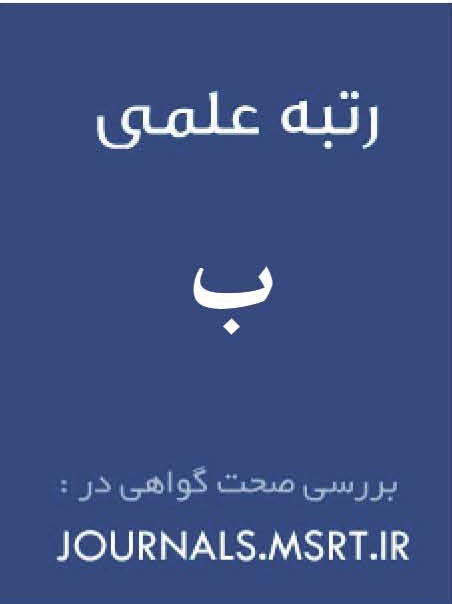بررسی تاثیر تحول دیجیتال بر کارایی حسابرسی، کارایی تولید و عملکرد مالی شرکتها با توجه به اندازه شرکت
کلمات کلیدی:
تحول دیجیتال, کارایی حسابرسی, کارایی تولید, عملکرد مالی شرکتهاچکیده
تحول دیجیتال از طریق فناوریهایی نظیر هوش مصنوعی، دادههای کلان و اتوماسیون، منجر به بهبود فرآیندهای حسابرسی، بهینهسازی تولید و ارتقای عملکرد مالی شرکتها شده است. این پژوهش، نقش تعدیلگری اندازه شرکت را نیز مورد بررسی قرار داد تا مشخص شود که تأثیر فناوریهای دیجیتال در شرکتهای کوچک و بزرگ چه تفاوتهایی دارد. یافتههای پژوهش میتواند مدیران و سیاستگذاران را در اتخاذ تصمیمات مرتبط با سرمایهگذاری در فناوریهای نوین و افزایش بهرهوری سازمانی یاری رساند. هدف این مطالعه، بررسی تأثیر تحول دیجیتال بر کارایی حسابرسی، کارایی تولید و عملکرد مالی شرکتها با در نظر گرفتن اندازه شرکت بهعنوان متغیر تعدیلگر بود. دادههای پژوهش از صورتهای مالی ۱۵۹ شرکت پذیرفتهشده در بورس اوراق بهادار تهران طی بازه زمانی ۱۳۹۷ تا ۱۴۰۲ گردآوری شد. تحلیل دادهها با استفاده از نرمافزار EViews 10 و بهکارگیری مدلهای رگرسیونی انجام گرفت. برای سنجش اثرات همزمان متغیرهای مستقل بر متغیرهای وابسته، علاوه بر رگرسیون کلی، تحلیل رگرسیون بهصورت جداگانه نیز برای هر متغیر مستقل اجرا شد. نتایج نشان داد که تحول دیجیتال تأثیر معناداری بر کارایی حسابرسی، کارایی تولید و عملکرد مالی شرکتها دارد. همچنین، اندازه شرکت در این روابط نقش تعدیلگر ایفا کرده است؛ بهگونهای که شرکتهای بزرگ به دلیل در اختیار داشتن منابع بیشتر، توانایی بالاتری در بهرهبرداری از فناوریهای دیجیتال داشتند، درحالیکه شرکتهای کوچک به دلیل محدودیت منابع، با چالشهایی در این زمینه مواجه بودند. در مجموع، تحول دیجیتال موجب افزایش بهرهوری و بهبود عملکرد مالی شرکتها شد و این اثر در شرکتها با اندازههای مختلف، متفاوت بود.
دانلودها
مراجع
Bashiri Manesh, N., & Shahnazi, H. (2022). The impact of investor and managerial behavioral biases on stock price bubbles in Iran's capital market. Financial Knowledge Securities Analysis, 15(53), 15-32. https://www.sid.ir/paper/1063333/fa
Bushee, B. J., & Noe, C. F. (2000). Corporate Disclosure Practices, Institutional Investors, and Stock Return Volatility. Journal of Accounting Research, 38(Supplement), 171-202. https://doi.org/10.2307/2672914
Ferreira, M. A., & Laux, P. A. (2007). Corporate Governance, Idiosyncratic Risk, and Information Flow. Journal of Finance, 62(2), 951-989. https://doi.org/10.1111/j.1540-6261.2007.01228.x
Gillan, S. L., & Starks, L. T. (2003). Corporate Governance, Corporate Ownership, and the Role of Institutional Investors: A Global Perspective. Journal of Applied Finance, 13(2), 4-22. https://doi.org/10.2139/ssrn.439500
Hasannejad Nisi, S., Jafari Dehkurdi, H., & Fattahi Nafchi, H. (2024). Explaining the Role of Organizational Core Competency in Stock Price Synchronicity. Journal of Management Accounting and Auditing Knowledge, 15(57), 315-334.
Hasanzadeh, I., Sheikh, M. J., Arabzadeh, M., & Farzinfar, A. A. (2023). The Role of Economic Policy Uncertainty in Relation to Financial Market Instability and Stock Liquidity in Tehran Stock Exchange Companies. Dynamic Management and Business Analysis, 2(3), 163-178. https://doi.org/10.22034/dmbaj.2024.2031971.2315
Mohammadi, S., & Mansourfar, G. (2022). The Effect of Financial Data Noise on the Long-Term Co-Movement of Stock Markets. Transactions on Data Analysis in Social Science, 4(1), 9-21. https://doi.org/10.47176/tdass/2022.9
Morck, R., Yeung, B., & Yu, W. (2000). The Information Content of Stock Markets: Why Do Emerging Markets Have Synchronous Stock Price Movements? Journal of Financial Economics, 58(1-2), 215-260. https://doi.org/10.1016/S0304-405X(00)00071-4
Nadeem, A. (2024). Behavioral and Rational Explanation of Stock Price Performance Around Mergers and Acquisitions in Pakistan: Evidence From Decomposition of Market to Book Ratio. Abbdm, 4(1), 38-52. https://doi.org/10.62019/abbdm.v4i1.102
Naderi, S., & Ghorbani, M. (2019). Analyzing the Effect of Ownership Structure on the Quality of Information in Financial Reports of Listed Companies. Accounting and Auditing Research, 11(2), 65-82.
Omol, E. J. (2024). Organizational Digital Transformation: From Evolution to Future Trends. Digital Transformation and Society, 3(3), 240-256. https://doi.org/10.1108/DTS-08-2023-0061
Rawat, B. (2023). Effect of Behavioral Biases on Investment Decision Making in Nepalese Stock Market With the Mediating Role of Investors’ Sentiment. Journal of Bhuwanishankar, 2(1), 40-61. https://doi.org/10.3126/jobs.v2i1.62195
Rezaei, K., & Bahmani, E. (2021). The Role of Institutional Investors in Reducing Information Asymmetry in Companies. Financial Accounting Quarterly, 13(4), 89-104.
Sharifi, M., Afzali, M., & Barzegar, H. (2020). The Effect of Herding Behavior on Stock Price Synchronicity in the Tehran Stock Exchange. Financial Research, 22(3), 57-78.
Truong, T. P., & Nguyen, T. T. (2021). Institutional Ownership and Stock Price Synchronicity: Evidence from Emerging Markets. Emerging Markets Review, 46, 100759. https://doi.org/10.1016/j.ememar.2020.100759
Vinay, H. V., Rao, D., Kumar, C., Rao, K., & Mahadevaswamy, R. M. (2024). Impact of Demographic Factors on Emotional Behavioral Biases of the Individual Investors: Empirical Study on Indian Stock Market. Migration Letters, 21(S6), 1648-1662. https://doi.org/10.59670/ml.v21is6.8381
Xia, Y., & Madni, G. R. (2024). Unleashing the behavioral factors affecting the decision making of Chinese investors in stock markets. PLoS One, 19(2), e0298797. https://doi.org/10.1371/journal.pone.0298797
Zakamulin, V. (2024). Stock price overreaction: evidence from bull and bear markets. Review of Behavioral Finance, 16(6), 998-1011. https://doi.org/10.1108/RBF-03-2024-0088
دانلود
چاپ شده
ارسال
بازنگری
پذیرش
شماره
نوع مقاله
مجوز
حق نشر 2025 Mohsen Hashemi Gohar (Corresponding author); khadije Razi (Author)

این پروژه تحت مجوز بین المللی Creative Commons Attribution-NonCommercial 4.0 می باشد.









